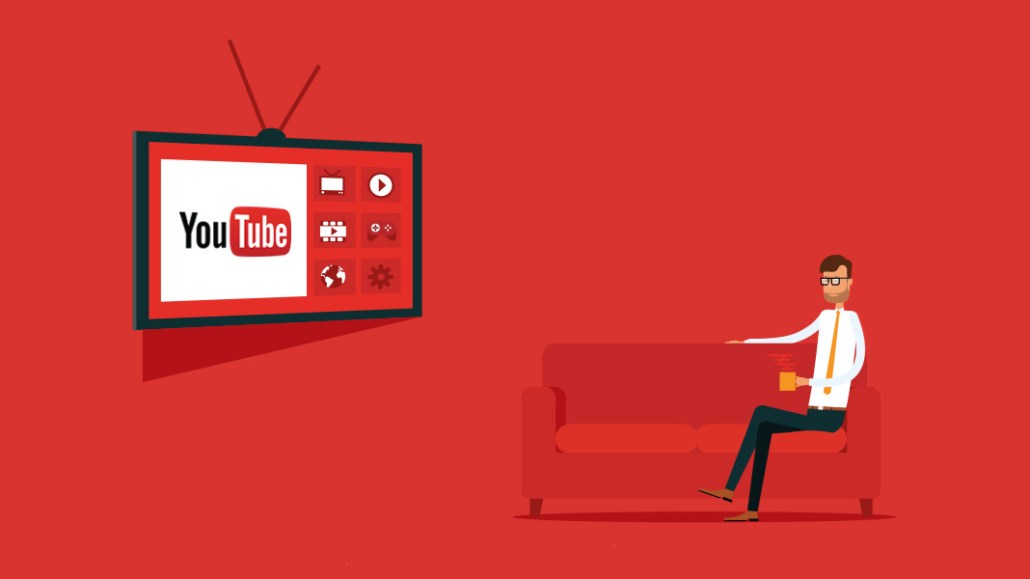
After years of boasting that it’s bigger than TV, YouTube has joined the TV business.
The Google-owned video giant has launched YouTube TV, a live TV service that seeks to compete with other internet-based TV services such as Dish Network’s Sling TV, AT&T’s DirecTV Now and Hulu’s upcoming service — as well as the broader pay-TV ecosystem. For $35 per month, YouTube gets you more than 40 channels including all of the major broadcast networks as well as popular cable networks such as ESPN, FX and Fox News. Soon, the lineup will add 10 more channels, including AMC, IFC and BBC, at no additional cost. At launch, the service is available in five cities including New York and Los Angeles.
Fundamentally, YouTube TV isn’t all that different from Sling TV or DirecTV Now, which also offer bundles of TV channels at an affordable price. It’s also a business worth jumping into, as Sling TV and DirecTV Now have attracted 1 million and 200,000 subscribers at a time when cord-cutting is on the rise.
Ultimately, though, YouTube TV is about YouTube getting more of its core users — 18- to 34-year-olds — to spend more time on its platforms.
“We started evaluating this two years ago,” said Kelly Merryman, vp of content partnerships for YouTube. “And what we were seeing on YouTube ad-supported was that TV clips were popular with our users.”
It’s why — with the upcoming addition of AMC to the main channel lineup — YouTube TV will carry 19 of the top 20 TV shows on air, including primetime shows such as “The Walking Dead” and “Empire.” Live sports, too, will be a major part of YouTube TV thanks to deals with the broadcast networks, national cable sports networks including ESPN, Fox Sports 1 and NBCSN, and regional sports cable networks Fox Sports and Comcast Sportsnet.
As an offering, YouTube TV covers most of what people are watching on TV with a few exceptions. Viacom-owned channels including MTV and Comedy Central are not part of the lineup. Showtime is available for an additional $11 per month, but HBO isn’t.
“We’re always talking to partners, and we’re thrilled with the programming,” Merryman said. “But this is a marathon, not a sprint, and in six, 12 or 18 months from now, we will be a lot smarter about what we need.”
As with other TV distributors, YouTube will also be able to sell some ads within YouTube TV, specifically the two minutes of inventory that’s typically set aside for distributors for every hour of programming.
YouTube is also integrating its other products into YouTube TV. Original movies and shows from YouTube Red, for instance, will be available to YouTube TV subscribers. Users will also have access to short-form clips from the broader YouTube ecosystem. For instance, the show page for “The Late Show with Stephen Colbert” will allow people to watch the show live, on-demand (if recorded) or short-form clips from previous episodes. The YouTube TV app will also offer a trending videos section, which will connect subscribers to the main YouTube app through deep links to watch popular videos on the platform.
“When you’re reaching a billion users per month, watching a billion hours per day, you want to give the audience the ability to experience YouTube the way they want to,” Merryman said. “Here, we recognized there are opportunities to connect [YouTube TV and YouTube] together.”
More in Future of TV

‘A year of loose ends’: Digiday editors share top takeaways from 2025
This year was filled with major developments – from Netflix’s planned WBD deal to Omnicom’s acquisition of IPG to Google’s ultimately cookie reversal – and Digiday editors Sara Jerde and Seb Joseph help to recap the year that was (and wasn’t).

Future of TV Briefing: How the future of TV shaped up in 2025
This week’s Future of TV Briefing looks back at the top topics and trends that overtook the TV, streaming and digital video industries in 2025.

Programmatic agency execs speak out on CTV transparency
At the recent Digiday Programmatic Marketing Summit, agency executives spoke out — on stage and in behind-closed-door town hall sessions — on how they see transparency in CTV.





